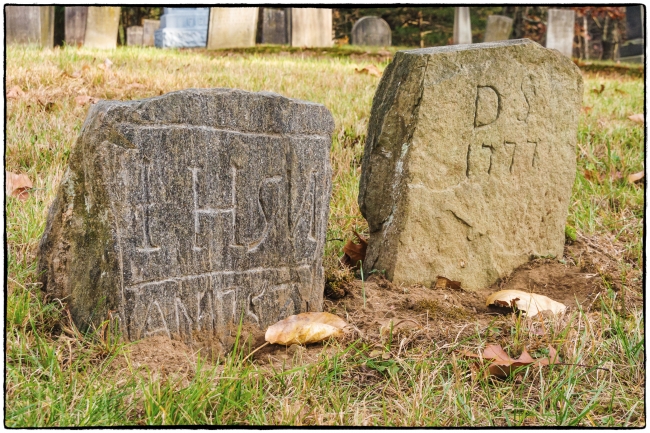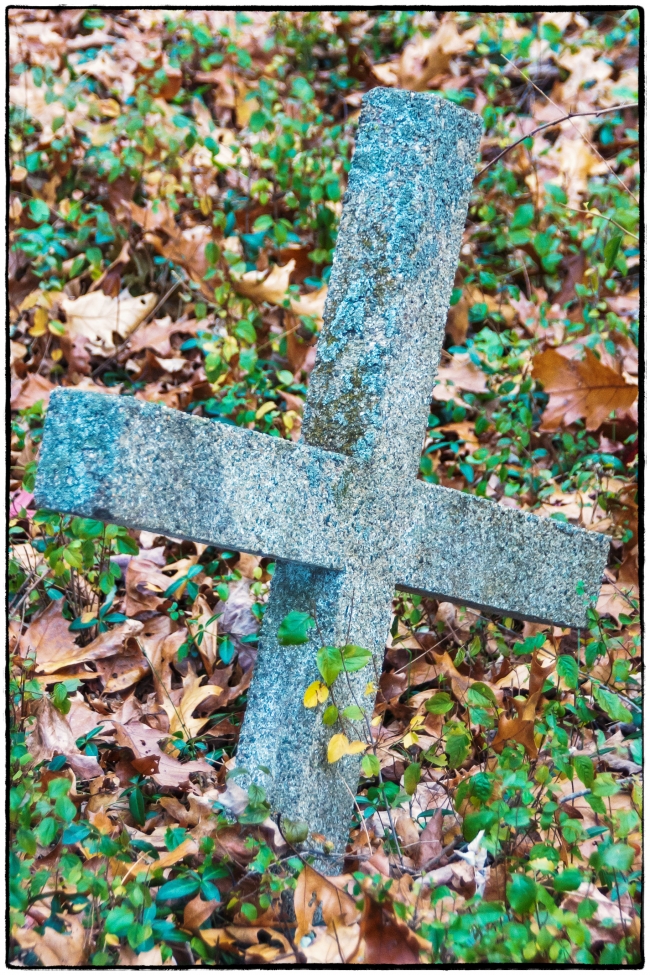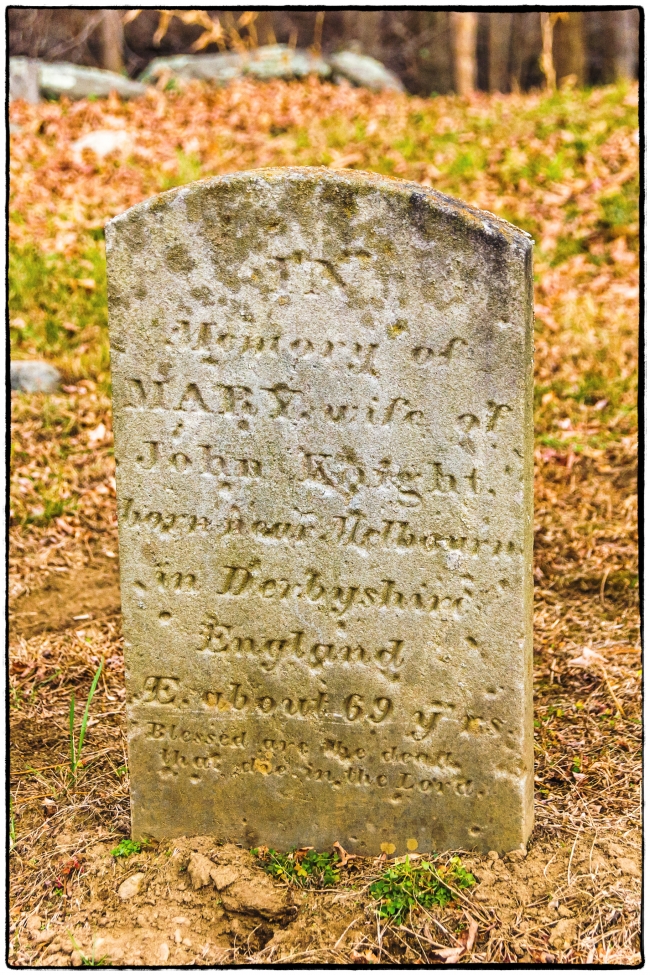A couple of older gravestones. They look as if they were home made rather than being professionally done. The one on the left is dated 1752 and also bears the inscription IHS and a fourth letter, which might be an ‘A’, but is hard to make out. According to Wikipedia IHS has the following meaning:
In the Latin-speaking Christianity of medieval Western Europe (and so among Catholics and many Protestants today), the most common Christogram became “IHS” or “IHC”, denoting the first three letters of the Greek name of Jesus, IHΣΟΥΣ, iota-eta-sigma, or ΙΗΣ.
The Greek letter iota is represented by I, and the eta by H, while the Greek letter sigma is either in its lunate form, represented by C, or its final form, represented by S. Because the Latin-alphabet letters I and J were not systematically distinguished until the 17th century, “JHS” and “JHC” are equivalent to “IHS” and “IHC”.
“IHS” is sometimes interpreted as meaning “Jesus Hominum (or Hierosolymae) Salvator”, (“Jesus, Saviour of men [or: of Jerusalem]” in Latin) or connected with In Hoc Signo. Such interpretations are known as backronyms. Used in Latin since the seventh century, the first use of IHS in an English document dates from the fourteenth century, in The vision of William concerning Piers Plowman. In the 15th century, Saint Bernardino of Siena popularized the use of the three letters on the background of a blazing sun to displace both popular pagan symbols and seals of political factions like the Guelphs and Ghibellines in public spaces (see Feast of the Holy Name of Jesus). The IHS monogram with the H surmounted by a cross above three nails and surrounded by a Sun is the emblem of the Jesuits, according to tradition introduced by Ignatius of Loyola in 1541. English-language interpretations of “IHS” have included “I Have Suffered” or “In His Service”, or jocularly and facetiously “Jesus H. Christ” (19th century).
Or I suppose it might just be that the person buried here had the initials IHSA.
The second gravestone has the initials D.S. and bears the date 1777.
Most of the gravestones are upright slabs so it was a bit of a surprise to see this simple cross peeping out from the dead leaves.
There’s nothing particularly special about this gravestone except for the inscription, which has a certain significance for me. The inscription reads: “IN Memory of Mary, wife of John Knight, born near Melbourn in Derbyshire, England (unknown symbol) about 69 years. Blessed are the dead that die in the Lord.” Melbourn is about 50 miles from where I grew up in the UK.



